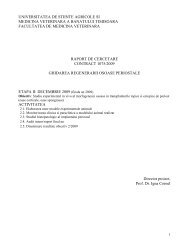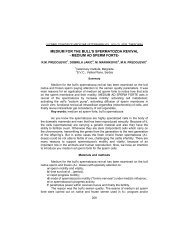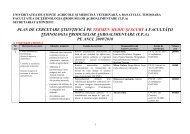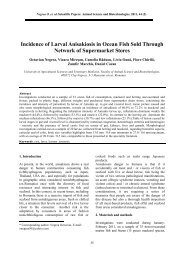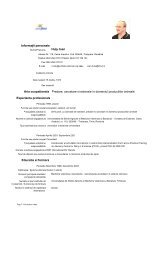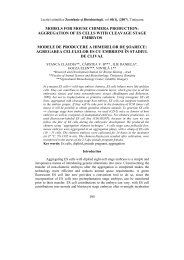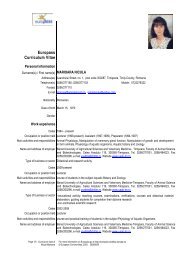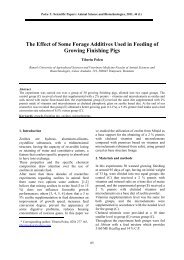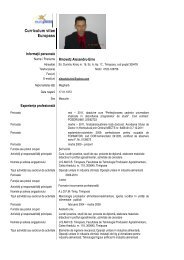journal of linguistic studies
journal of linguistic studies
journal of linguistic studies
You also want an ePaper? Increase the reach of your titles
YUMPU automatically turns print PDFs into web optimized ePapers that Google loves.
this error to category <strong>of</strong> his errors. You just put them aside as mistakes. From this aspect,<br />
the common sense approach is more advantageous than others.<br />
First, it goes without direct intervention, then, observing students thoroughly.<br />
Isolation is the key stage <strong>of</strong> this approach, and teachers should note the whole errors<br />
respectively, identify its type, pragmatic errors or <strong>linguistic</strong> ones, if the errors fall into the<br />
latter kind, he should subdivide into different category: pronunciation, morphology,<br />
semantics, syntax, etc. For different type, he could mark with different sign. Such as: G<br />
for grammatical error (Grammar); M means wrong morphology (Morphology); S<br />
(Syntax) shows syntax error, and so on. In this way it is also much quicker to make a<br />
note. After all the representations, comes the third stage: explanation. In this stage, the<br />
teacher describes the errors, this not only alerts the student that an error has been<br />
identified and is about to be treated, but also describes where the problem is occurring,<br />
(ex: syntax, morphology, semantics, phonology) and what the problem involves (ex:<br />
incorrect production <strong>of</strong> a phoneme, misuse <strong>of</strong> verb, incorrect word order, etc.).<br />
He need not direct any error that has been produced. He could make a choice<br />
emphatically. For some global errors, he must explain, either on the blackboard or on the<br />
slide, so all the people can notice. He could elaborate on them himself, or ask students to<br />
discuss, and self-correction or peer-correction is welcome in this stage. But for one or two<br />
inconsiderable errors <strong>of</strong> someone, he needn’t point them out, just show them to that<br />
student, it is ok. After the thorough explanation, experimentation follows. This stage<br />
could be flexible, either on class or after class, depending on the flow <strong>of</strong> the lesson or<br />
actual condition. It will vary from teacher to teacher.<br />
Pronunciation problems could be addressed utilizing minimal pairs and points <strong>of</strong><br />
articulation, while grammar correction could be handled by contrasting the unacceptable<br />
form with the acceptable form, morphology and syntax problems <strong>of</strong>ten involve<br />
developmental errors, such as the overgeneralization <strong>of</strong> second language verb rules, e.g.,<br />
*buyed instead <strong>of</strong> bought, it is in fact contrastive, or negative transfer errors. Unlike<br />
traditional correction, where the student is drilled until the correct form is internalized,<br />
experimentation makes no short-term time demands on the student. The student attempts<br />
to correctly use the language in a real communicative environment, which may last an<br />
indeterminate period <strong>of</strong> time. Arrival at the final stage, learning-acquisition, and students<br />
may learn quickly, and then have to relearn later, or learn slowly and have to relearn<br />
periodically. Days later, the teacher could check some points concerning their errors, give<br />
some topics to communicate, see if they could perform better in the real communicative<br />
situation. The five-stage approach avoids both the monotony and stress <strong>of</strong> intense audiolingual<br />
classrooms, and is less artificial and yields results as good as or better than<br />
traditional error correction.<br />
5. CONCLUSION<br />
In brief, in spoken language teaching the teacher should treat errors differently, he<br />
need not correct any error or put one aside. To train students to speak bravely is <strong>of</strong> great<br />
importance. Meanwhile to help them to discover, correct, and seldom commit errors is<br />
much more important. Only in this way, could we lay a solid foundation for further study,<br />
pushing listening, speaking, reading, writing synchronously.<br />
39



